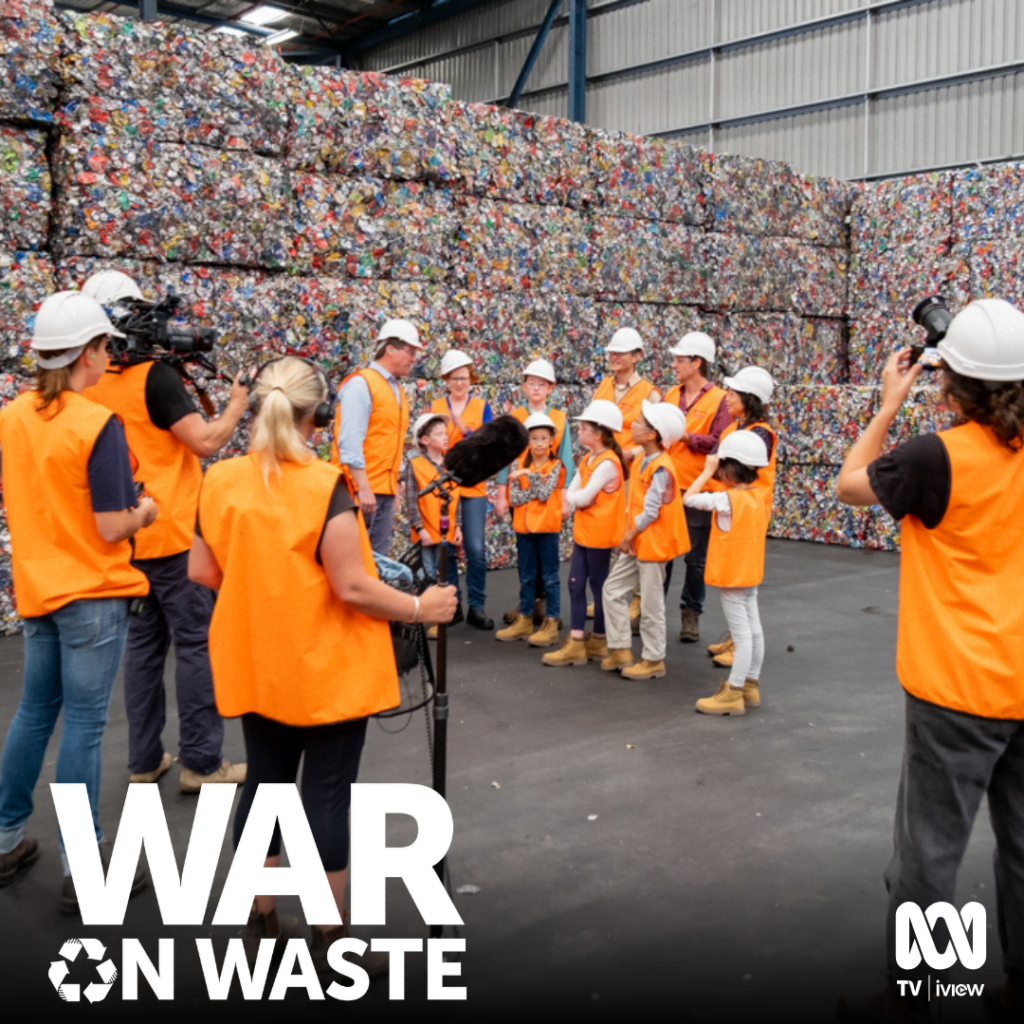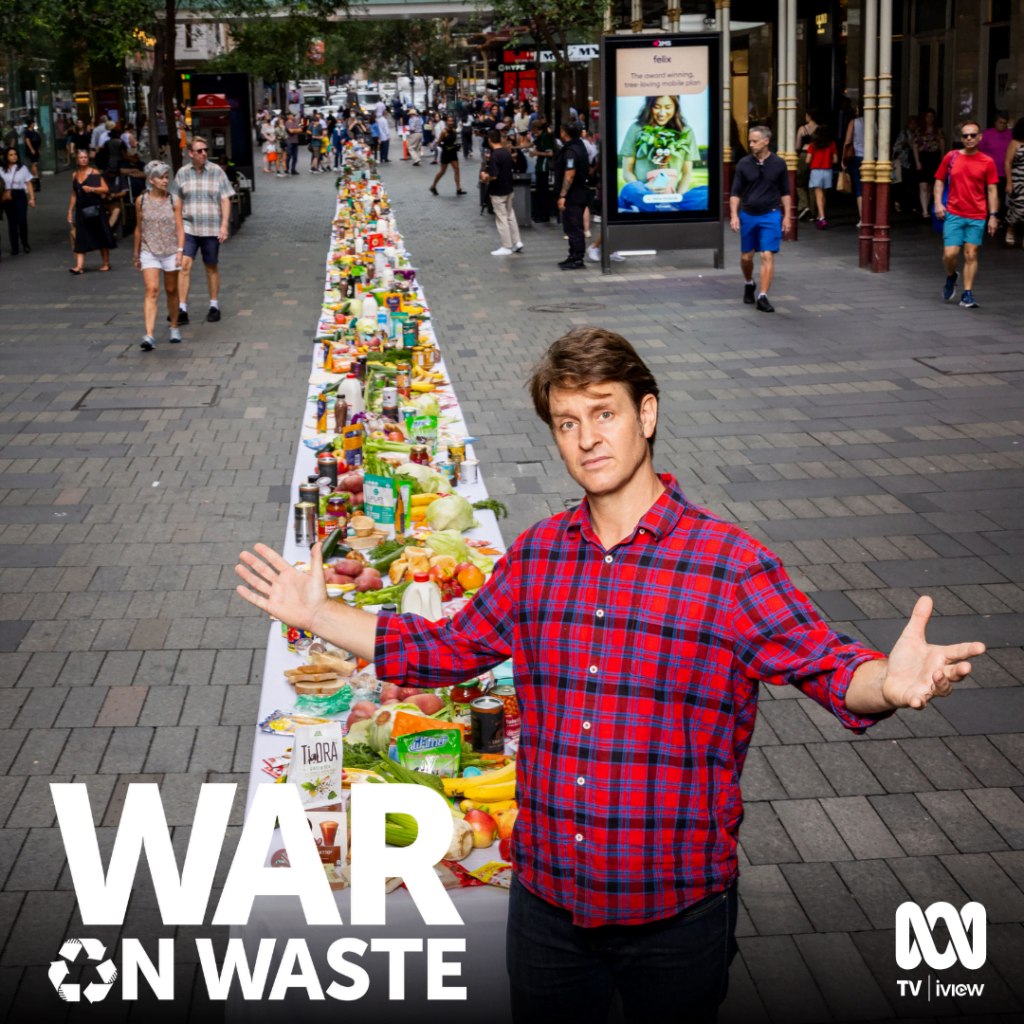War on Waste Community Toolkit Launch
Reviewed by Andrew Rupolo, Renew-Hunter Region Branch.
On Wednesday 19 July, I listened to a great presentation by Good for the Hood about the new series of War on Waste. The show is a 3 part series airing on the ABC on Tuesday evenings at 8:30pm. Jo Taranto from Good for the Hood hosted the event featuring special guests Craig Reucassel (host of War on Waste), Marion Vigot from Responsible Cafes and Nina Gbor from Eco Styles. We heard from Craig about his experience filming the show and about the great work that Marion and Nina are doing in the sustainability field. It was light-hearted but very educational with a large audience of councils and not-for-profits.
It is 6 years since the series first aired and Craig notes that some areas have seen improvement while others have not. Fashion and soft plastics are identified as big problem areas. The major concern is that plastic consumption is expected to double in 30 years time so serious efforts are needed immediately to move the dial. Above all Craig mentions that the initial two seasons did succeed in accelerating the community mandate for better waste systems and that this political/community agency is the real driver to instigating change as opposed to consumer decisions.
A big focus of the series will be educating people as to the link between overconsumption of food, fashion and plastics with the climate crisis particularly granted that plastics require oil extraction to manufacture and transport. Craig advocates for a ‘Price on Plastic’ to disincentivise producers from distancing themselves from the environmental and climate effects of their items. This is part of a broader focus on ‘Extended Producer Responsibility’ to encourage and mandate further research into alternative packaging materials let alone a philosophical shift to consume less in the first place. He identifies this as a major barrier which could be overcome with aforementioned levies on polluting products, making these efforts mandatory industry wide as opposed to voluntary.

Another observation made in response to the first two seasons was the need for more standardised rubbish guidelines as these change from council to council and vary in clarity, leaving conscientious residents in the lurch. He mentioned that Return and Earn in NSW has been a huge success and has had a far bigger impact than Victorian trials in kerbside glass/aluminium collection.
Marion Vigot from Responsible Cafes, an organisation that educates and accredits cafes in sustainability spoke about a new effort called No Single Use Fridays which is being rolled out across Australia for cafes and offices.
Nina Gbor then spoke with some damning statistics about the fashion industry, deeming it a new ‘single use’ market consuming enormous amounts of plastics and water (to grow cotton). In fact up to a third of micro plastics are generated from clothing. Her aim through Eco-Styles is to educate the public about clothing waste and encourage community ‘clothing swaps’ where people swap used items of clothing free of charge.

She mentioned that Australia is the second biggest global consumer of textiles per capita with 2/3 of clothes purchased ending up in landfill. Only 16% of clothes donated to charities are resold, the rest being processed and disposed into landfill or shipped overseas where it is most likely dumped in landfills in West Africa. A big issue is also the importing standard for clothing, of the 383m tonnes of clothes purchased in Australia each year, only 10m tonnes is produced here. Craig mentioned that measures such as tariffs or ‘minimum sustainability standards’ would deter excessive dirty imports and clean the market somewhat (perhaps like the incoming Minimum Vehicle Efficiency Standards).
An initiative has also been established by the Australian Fashion Council called Seamless. It aims to implement a circular fashion economy by 2030. It is a voluntary levy system of 4c per garment by participating businesses into research aimed at sustainable clothing materials, packaging and transport systems. Environment Minister Plibersek has promised that the scheme will be made mandatory in 12 months for industry big players.
Overall a great presentation with many leads to follow. Possibly some ideas for community organising such as Clothes Swapping and advocacy for policy measures mandating prices on plastic pollution and fast fashion imports.
Organisers, Good for the Hood are all about bringing people together and giving them the tools to create meaningful change in their community. They help communities, businesses and councils to seed, grow and nurture change from the ground up, creating thriving communities that are connected and working together for a better ‘hood.
Useful links:
If you missed the 3 episode series, you can watch them on ABC iview
- War on Waste Community Toolkit Launch – Good for the Hood Video
- War on Waste Action Toolkit – Your Guide to taking up the WoW in your ‘Hood!
- Good for the Hood – who we are and what we do
- Online community hub Port Stephens Residents @HOME
Craig Reucassel on making War on Waste 3 and what he learnt that shocked him – ABC News 19 July 2023
We’re lab rats: Is the War on Waste making a difference? – Sydney Morning Herald 24 July 2023



